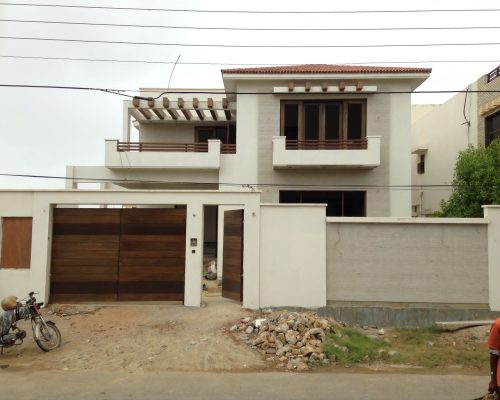Pakistan’s real estate landscape is evolving faster than ever. In the last decade, several large-scale housing developments have emerged that are transforming how people live, invest, and think about property. From the drawing board to livable communities, the journey of these projects reflects not only urban expansion but also economic shifts and changing lifestyles.
If you’re a real estate agent in DHA City, or simply someone following Pakistan’s property trends, understanding how these housing schemes come to life can be both insightful and rewarding.
What Sparks a Mega Housing Project?
Large housing projects don’t just appear overnight. They begin with a vision—usually a mix of urban planning, private investment, and sometimes government support. But what truly drives these developments?
- Rapid urbanization in cities like Karachi, Lahore, and Islamabad
- A growing middle class looking for better living standards
- Overseas Pakistanis investing in long-term property options
- Strategic land acquisitions on city outskirts
Developers see these factors as signals to start planning gated communities, commercial hubs, and luxury apartments that cater to diverse needs.
Phase One: Land Acquisition and Planning
Before any groundwork begins, developers need land. This phase can take months—or even years—as it involves:
- Legal checks for land ownership
- Acquiring large, connected land areas
- Getting clearance from local development authorities
Once the land is secured, the project’s blueprint takes shape. Urban planners design roads, zones for commercial and residential areas, parks, and utility networks. Big names like Bahria Town, DHA, and Capital Smart City invest heavily in this phase to ensure long-term viability.
Approvals and Permissions
Housing schemes must be approved by various regulatory bodies. In Pakistan, these might include:
- Capital Development Authority (CDA)
- Lahore Development Authority (LDA)
- Sindh Building Control Authority (SBCA)
Getting these approvals isn’t just paperwork. Developers must prove that their plans align with city masterplans, provide water and electricity solutions, and ensure infrastructure stability.
Infrastructure Development: Laying the Foundation
Once approvals are in place, development begins. This phase is often the most visible and includes:
- Road and sewerage systems
- Electricity and gas pipelines
- Water reservoirs
- Boundary walls and security posts
For projects like DHA Lahore Phase 9 or Bahria Town Karachi, developers use modern construction machinery and project management techniques to stay on schedule.
Construction of Residential and Commercial Units
After basic infrastructure, builders start constructing homes, plazas, mosques, schools, and hospitals. Some projects offer pre-built villas while others sell plots where buyers can construct homes later.
Here’s what’s commonly seen in this phase:
- Grey structure and finishing of houses
- Apartment towers for middle and upper-class families
- Shopping malls and business districts
- Community centers and entertainment venues
This is when potential buyers begin to see the community take shape.
Popular Housing Projects Shaping the Future
Let’s take a closer look at some of the biggest housing developments currently underway or recently completed in Pakistan.
Bahria Town Karachi
Possibly the most talked-about project in recent years, Bahria Town Karachi is a privately-owned mega city just outside Karachi. Launched in 2014, it spans over 46,000 acres.
Key highlights:
- Iconic landmarks like Bahria Dancing Fountain and Bahria Adventure Land
- Medical facilities including Bahria International Hospital
- Multiple schools and colleges within the town
- A range of housing options from 125 sq. yard plots to luxury villas
With hundreds of families already living there, Bahria Town Karachi is now considered a self-sustaining city.
DHA Lahore
Defence Housing Authority (DHA) Lahore is known for setting the standard in planned urban living. It has multiple phases, each better developed than the last.
Why it stands out:
- High-end security and gated zones
- Green spaces and wide roads
- Rapidly developing commercial areas
- Strong resale and rental market
Phases 6 to 9 have seen a surge in interest from both local and overseas Pakistanis.
Capital Smart City Islamabad
Located near the new Islamabad International Airport, Capital Smart City is Pakistan’s first truly smart housing project.
Its features include:
- Smart traffic management and street lighting
- Environmentally friendly design with green belts
- Fiber-optic internet and tech-enabled homes
- Dedicated areas for education and healthcare
Capital Smart City appeals to tech-savvy investors looking for future-proof property.
Blue World City
Another major development near Islamabad, Blue World City aims to offer affordable housing with modern amenities.
Unique aspects:
- A Chinese-inspired architectural theme
- Tourism district with replicas of global landmarks
- Joint venture with Chinese construction companies
It targets both middle-income families and overseas Pakistanis.
Challenges Faced During Development
Even the most well-funded projects encounter obstacles:
- Delays in government approvals
- Legal disputes over land ownership
- Inflation and rising material costs
- Political instability affecting investor confidence
However, seasoned developers often have strategies to handle these challenges, such as phased development or partnerships with banks for financing.
How Investors Track Project Progress
For those putting money into housing projects, staying updated is essential. Here are a few ways investors track progress:
- Visiting the site personally or via representatives
- Following developer updates on social media
- Watching drone footage and construction updates on YouTube
- Checking third-party real estate portals for price trends
Some housing schemes also launch mobile apps where investors can track payment plans, maps, and possession timelines.
The Role of Real Estate Agents
In these large-scale projects, real estate agents play a major role in guiding buyers. They offer insights into:
- Which blocks or sectors have high growth potential
- What type of property suits different budgets
- Legal due diligence to avoid scams
- Payment plan navigation and installment reminders
Their guidance can make or break an investment decision—especially for overseas Pakistanis who rely on local expertise.
Why These Projects Matter for Pakistan’s Future
These mega housing schemes are more than just housing colonies. They’re shaping Pakistan’s urban future. Here’s how:
- Creating thousands of jobs in construction and services
- Encouraging formalized real estate investment
- Improving infrastructure in underdeveloped areas
- Offering better quality of life for middle and upper-income families
Cities are expanding outward, and these gated communities are often the first wave of new urban areas.
Final Thoughts:
Timing is everything in real estate. Buying a plot or apartment early in a project usually brings the highest returns. But that also carries some risks, especially if the development is slow or approvals are still pending.
On the other hand, late-stage projects might cost more but offer safety and immediate possession. Understanding this balance is key for any smart investor.
If you’re considering investment in Bahria Town Karachi, or similar housing projects, now is a good time to review your options, check development progress, and speak to trusted real estate advisors.
As Pakistan continues to urbanize, the story of its largest housing projects is still being written—one phase, one block, and one home at a time.









